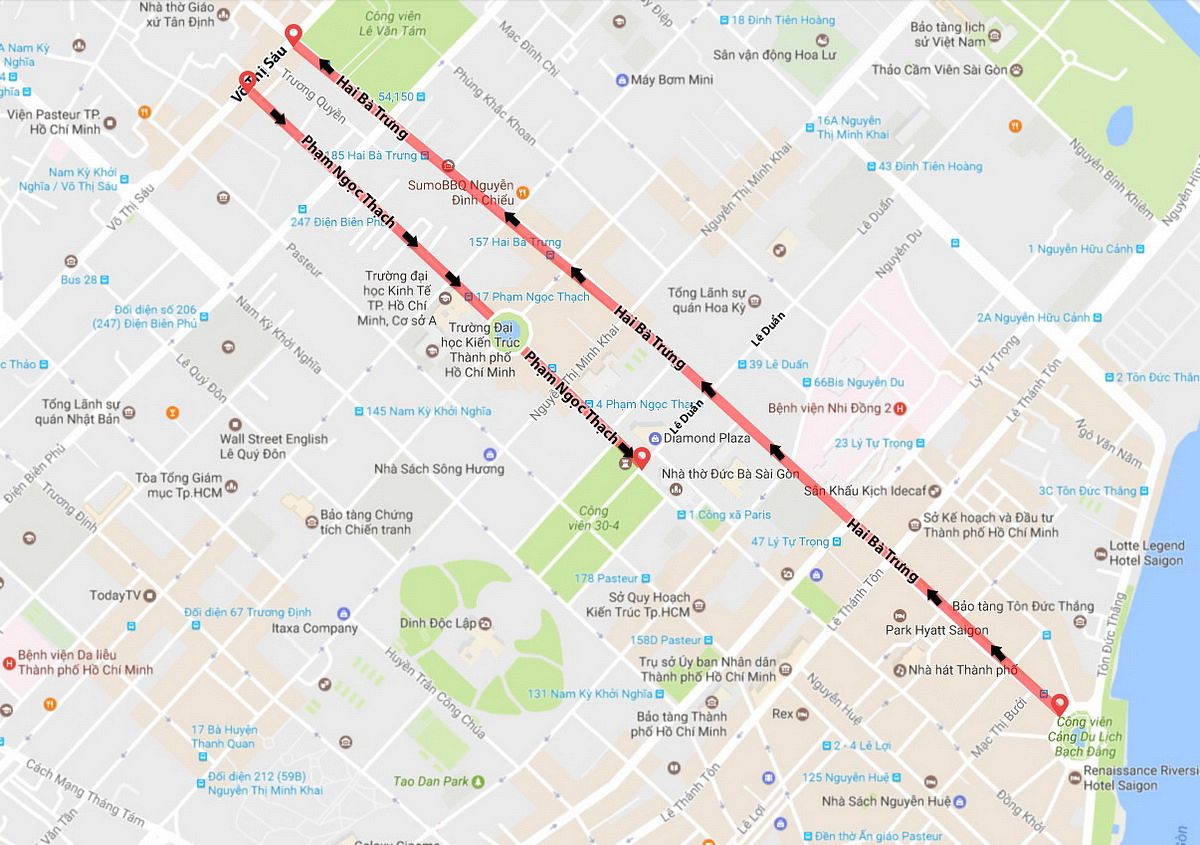While Saigon’s first metro line is still very much under construction, municipal authorities are hoping to get the ball rolling on the city’s Metro Line 5.
VnExpress reports that the Ho Chi Minh City People’s Committee recently greenlit a plan to start accepting bids from private investors for the city’s Line 5. According to previous proposals, the route will link the new Can Giuoc Bus Station in Binh Chanh District to the Saigon Bridge in Binh Thanh District. Trains will make stops along the way in District 8, at the University of Medicine and Pharmacy, the Bay Hien Intersection, Hoang Van Thu Park and Hang Xanh Intersection.
Future investments will be made as part of a public-private partnership scheme. Earlier in 2017, South Korean conglomerate expressed interest in doing some independent assessments on the project over the span of nine months. However, thanks to a range of problems – including bureaucratic red tape and internal struggles in its Seoul-based headquarters – progress on the studies is lagging behind.
Metro Line 5 is expected to cost VND100 trillion (US$4.4 billion), and be built in two phases. The first phase aims to finish the second half of of the line from the Bay Hien Intersection in Tan Binh District to the Saigon Bridge. According to the news source, some investors have already agreed to contribute to the funding for this phase – VND41.6 trillion (US$1.83 billion).
The second phase, which links Bay Hien – the midpoint of the line – with the Can Giuoc Bus Station in the southern part of District 8, will cost VND57.1 trillion (US$2.51 billion).

The proposed station plan of Metro Line 5 in light blue. This is subjected to future changes. Map by James Clark via Nomadic Notes.
Saigon authorities are trying to complete the city’s first-ever metro line that connects Ben Thanh Market with Suoi Tien Park in District 9. After numerous delays in fund reimbursement, the project’s deadline has been finalized to be 2020.
Late last year, the city also started looking for investments for its Metro Line 3A, which will intersect with Line 1 and Line 3B at Ben Thanh Station, thus bringing together residents from Saigon’s western, central and eastern communities. Moreover, the system will also link the metropolis’ two major bus stations: Mien Dong in the east and Mien Tay in the west.















